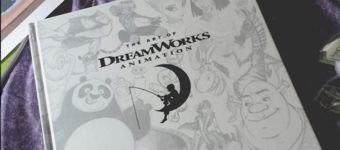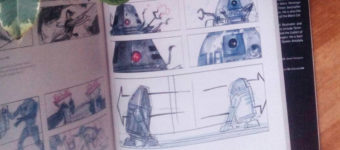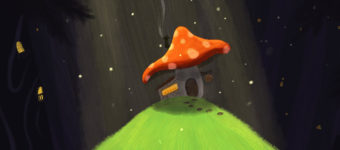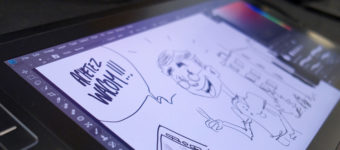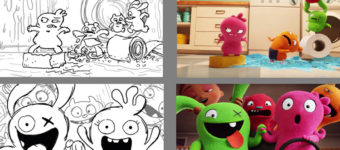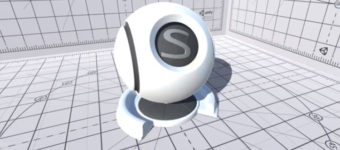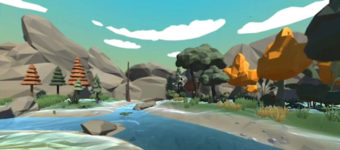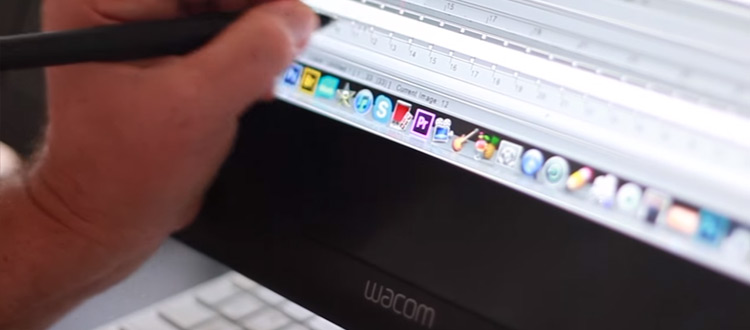
How To Become A Professional Concept Artist: The Ultimate Guide
There’s a lot of buzz around the concept art industry. It’s one of the most creative careers for artists who want to design concepts for video games, movies, and digital entertainment.
With movie & game artbooks and behind-the-scenes DVD features more people are learning about concept art as a career.
And there’s much more opportunity now than 20 years ago.
While it’s true that concept art is competitive, there’s always a need for talent. There’s a growing demand for quality video games and digital entertainment.
But how can an average Joe/Jane get started on the path to a career in concept art? This is a multifaceted question and the answer is relevant to other entertainment art careers like 3D modelers, animators, and vis dev artists.
Below I have a slew of resources, tips, and guidelines to help anyone find their way into a concept art career. It’s not an easy journey, but nothing worth having is ever easy.
If you truly love art and entertainment then don’t give up on your dream.
When Is It “Too Late”?
One of the most commonly asked questions about starting an art career is the question of age.
“I’m XX years old and can’t draw, is this too late to start?”
The most consistent answer to this question is that it’s never too late. You’ll find dozens of forum threads and Reddit posts on this question of age. Almost every answer states there isn’t a “too old”. I’m inclined to agree with this.
But let’s examine the question deeper.
Most people who ask this question really want to plan out their long game. If someone begins drawing at age 35 and draws 6+ hours every day, they might reach a proficient level of skill by age 38-40. However they’d have no experience and would be looking for employers open to hiring a late 30s concept artist.
A user on the ConceptArt.org forum named dpaint made this response which is especially poignant. He has 20+ years industry experience and is trusted poster on the site.
He argues that it’s not necessarily a single age that makes you “too old” to become a concept artist. It’s that as you age, life can get more complicated. Marriage and kids may become a priority. You may have less time to practice. This is why people in their 20s have an easier path getting started.
But just because time may be against you doesn’t mean the career is impossible. You’ll just need to practice hard and really work to improve as quickly as you can.
Also keep in mind that companies hire people, not artists. Yes your skills are absolutely vital to your career trajectory. But so is your personality, behavior, and connection(s) with others in the industry.
If you’re an awesome person that others want to be around, plus you have the necessary artistic skills, you have a decent shot breaking into the industry in your 30s or 40s(or later).
The biggest downside is that artists don’t earn very much money. The job may be glamorous and exciting but it’s not the path to riches.
If you love art & entertainment you will love the work. But don’t go into this field expecting a 6 figure salary. It is possible but you need to work damn hard.
You have to ask yourself if the career is worth the effort. Only you can answer when it’s too late to pursue this career. Just remember it’s not predicated on your age, but rather your mindset and lifestyle.
If you’re able to go all-in and really dedicate yourself to art then you can build a stellar portfolio in just a few years and land your dream job as a concept artist/entertainment designer.
How To Practice
If you’re starting from scratch then you’ll want to learn the fundamentals first. This advice gets repeated ad nauseam and it’s almost an empty statement at this point.
But you really do need to learn your fundamentals to advance as an artist. Form, value, lighting, and perspective are a few examples.
The best way to understand these pragmatically is to work from life. You’ll want to start with drawing and eventually move onto painting, however both practices require the same underlying principles.
To draw anything from life you’ll need to see the way artists see things. Art has two components: seeing and recreating. The technical hand movements comes with practice, as does seeing and measuring.
The best way to practice and rapidly improve is through life drawing.
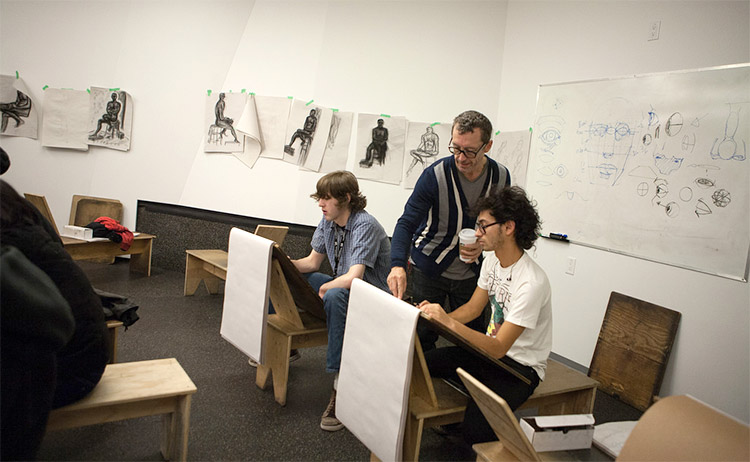
Concept art is finely-rendered art mostly following realism, but with full opportunity for your imagination to run wild far beyond the limits of reality.
Your goal is to find a nice mix between these two “types” of art and merge them to create realistic-looking imaginary art.
If you can draw/paint a real object in front of you then eventually you’ll learn to do it from your head. Then you can practice imaginative drawing to create characters, environments, vehicles, and whatever you want.
All of this predicates on your ability to master the fundamentals first and truly understand how they affect your work. So how do you actually do this?
Where(And What) To Study
If you search Google you’ll find tons of beginner books and art lessons online. This can be incredibly daunting at first.
When I started drawing I purchased way too many books and didn’t find much value in enough of them.
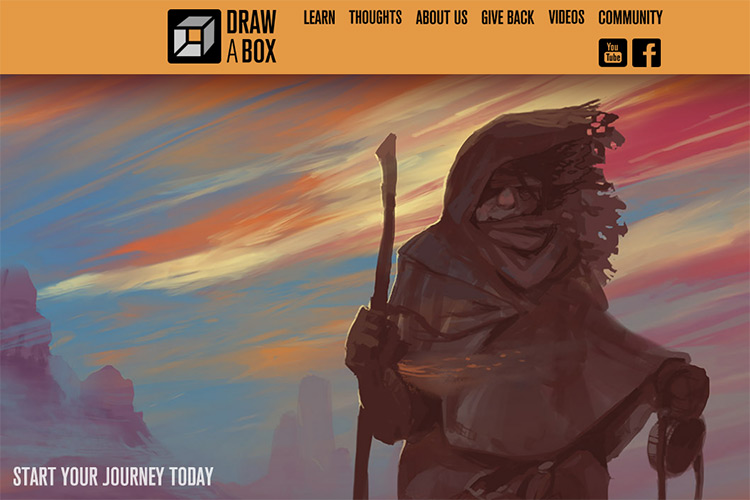
When you first get started try to stick with only a few resources. Drawabox is completely free and covers lessons created by an accomplished artist. I wrote a full review of the course if you’re interested.
For video courses there’s no better option than Proko, specifically his detailed course on figure drawing. This may seem like an odd place to start but it teaches you all the fundamentals of drawing imaginary shapes while also teaching you life drawing.
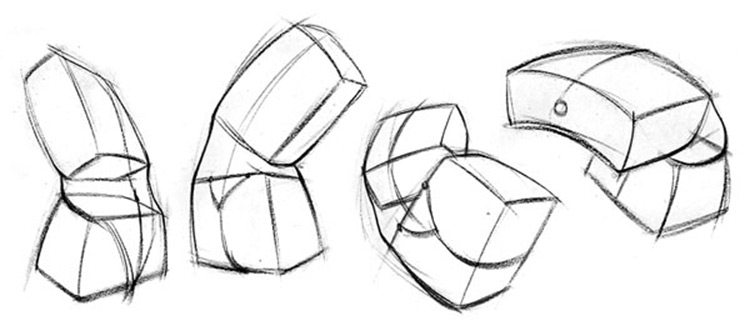
I love Proko’s lessons because they’re simple and easily the most straightforward learning courses for new artists. You can repeat his lessons every day for months and still get something new each time.
The Proko figure drawing course is specifically made for beginners and I wrote a review on that too.
As for a book on learning the fundamentals, start with Scott Robertson’s How To Draw. Granted this doesn’t teach life drawing so it won’t have everything you need.
But it does focus on drawing from imagination. A concept artist’s job is to draw from imagination so this book fits that bill perfectly.
There are so many books out there that I really can’t list them all. Some books cover perspective, others cover lighting and others delve into deep subjects like human anatomy. Not all of them will be useful to beginners.
But here are some to consider if you’re looking to teach yourself from scratch.
- Perspective Made Easy
- Drawing on the Right Side of the Brain
- Beginner’s Guide to Digital Painting in Photoshop
I know some people don’t feel comfortable with self teaching. This may come down to lack of discipline, stress, confusion, or inability to create a custom lesson plan. But keep in mind that art is a consistent journey and you’re never really done learning.
Getting started is the first step. Learning to teach yourself happens over time with practice.
Every artist eventually needs to become their own teacher by pushing themselves further. But when getting started you may feel better working with a teacher.
You’ll get lots of benefits from a skilled art teacher and from working in a classroom setting. The hardest part is finding a school that really cares about this type of art and can work with you on the process.
ArtCenter is recommended as the best place to go for concept art. It’s also very expensive.
Alternatively there’s Concept Design Academy. It’s cheaper but it’s not an accredited school(not necessarily a bad thing).
FZD School of Design is another concept art/entertainment design school in Singapore. It’s open to international students but it’s also fairly expensive. Still, this is the best place to go if you’re hoping to get into concept art. But you’ll need to be okay with the fierce 1-year curriculum which you can read about in this review by an FZD alum.
But not everyone can afford a physical art school(or go into debt for it!). Thankfully online schools like CG Spectrum are much more affordable.
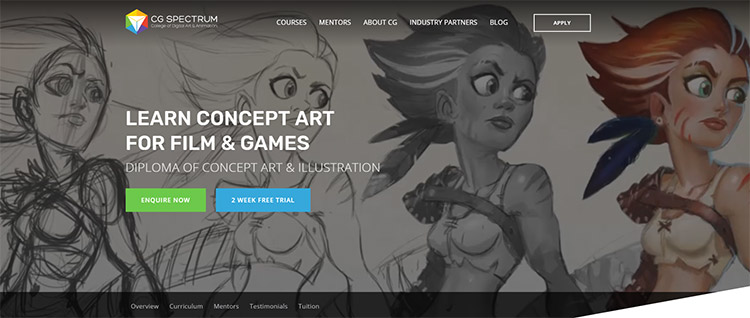
The classes on CG Spectrum cover everything from art fundamentals to 2D concept art, 3D rigging, digital painting, animation, everything. You study under real professional artists and you get to ask questions online through live chats.
This might be a great choice for someone who likes working with instructors but just cannot afford the full-time tuition to a university. You can learn more on the courses page to see what sort of classes CG Spectrum offers.
Or you can read our in-depth review of CG Spectrum to get a better feeling of how their classes work.
But if you don’t have much(or any) money then I highly recommend teaching yourself. It’s completely possible if you put in the time.
There are plenty of resources out there in print and online, plus communities like ConceptArt.org and /r/LearnArt can help you plan lessons and offer critiques on your work.
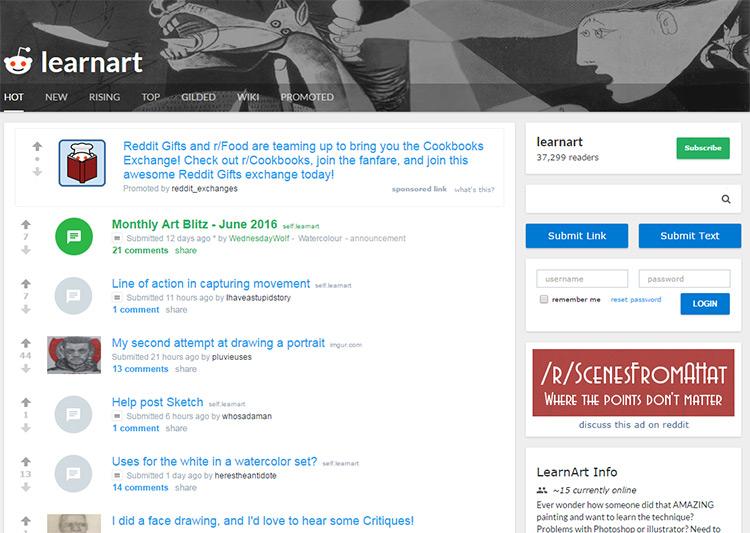
Just realize that however you choose to learn, there is no right or wrong way to do it.
The only thing that matters is results. If you find something that works for you then keep going with that routine. Nobody accidentally became a concept artist. It takes years of genuine toil, research, and hard work.
But if you can make the time and stay focused I guarantee you’ll surprise yourself.
Equipment for Beginners
I’m a huge proponent of starting with traditional tools. This forces you to stay away from the complications of software and computer accessories by working in the most common medium of a new artist.
If you want to dive right into digital there’s nothing wrong with that. It’s OK to do either because any form of drawing is better than none. But let’s look at traditional materials first.
All you need for basic drawing is some printer paper and a pencil. I prefer the Staedtler 2B pack and it’s always a good idea to grab a box set because pencils get worn down quick.
If you’d rather do sketchbooks the traditional Moleskine sketchbook is a great choice. There’s also cheaper options like this Canson sketchbook with a spiral binding. Take a peek at our sketchbook buyer’s guide for a huge list of options.
Lastly you’ll want a pencil sharpener. Many people have these around the house, but you can get a small portable one dirt cheap from Amazon or from any art supplies store.
Now if you’d rather start digital that is totally okay and you won’t need much beyond a drawing tablet. If your computer already has Photoshop or a similar painting program then you’re all set.
Choosing your first drawing tablet can be exhausting and it’s a much deeper topic than this guide. You can take a peek at our tablet reviews to see what’s out there, but for newbies it’s better to keep things simple.
New students who join the FZD School program are required to bring a Wacom Intuos Pro and work from that all year long. It’s FZD’s go-to suggestion for brand new students. This says a lot about the possibilities you can achieve with this tablet-especially if you look at FZD before and after artwork.
You can run the Intuos Pro for years and never need to upgrade until your progress is hindered by the limited features. It’s very affordable, durable, and truly all you need to get started with digital drawing/painting.

Beyond a tablet there’s really nothing else you need for digital work. Yes there are accessory kits for extra styluses, but this isn’t needed for a beginner just starting to learn.
Regardless of your strategy just pick a route and stick with it. You can learn just as much going digital as you can with traditional pencil & paper. The choice comes down to you and your comfort level.
Eventually traditional artists will want to switch to digital, so the Intuos Pro is definitely a worthwhile investment. But when first starting don’t buy more than you have to.
If your only goal is to become a professional concept artist then look through my guide on tablets for concept art. This will point you in the right direction if you’re okay to start digitally.
But focus most of your efforts on practicing art rather than purchasing artsy things. With some printer paper, a few pencils, and the Proko figure course you’ll have enough to practice every day for months without the need to buy anything else.
Showing Off Your Work
Once you learn to draw and paint well enough then you should consider how to get your work in front of people for critiques. Showcasing your work doesn’t guarantee a career in concept art, but it’s a necessary step along the way.
You will need to create a portfolio of work at some point to showcase your skills. There is so much advice already online so I don’t want to go into much detail. Here are some alternate links to check out:
- Your Concept Art Portfolio
- What Does A Successful Concept Art Portfolio Look Like?
- FZD Design Cinema 19 – Portfolio Prep Part 01
You want your portfolio work to be unique and focused.
If you’re attempting to be an environment artist then focus primarily on environment art. But also diversify your environment work to make each piece unique and show off your skillset.
When first getting started this probably won’t make sense. Especially if you’ve never painted or designed a piece with the intention of being in a portfolio.
Look through some of our inspiration galleries featuring art from hundreds of professional artists. These galleries will help you gauge quality and give you a barometer for checking when your work is up to industry standard.
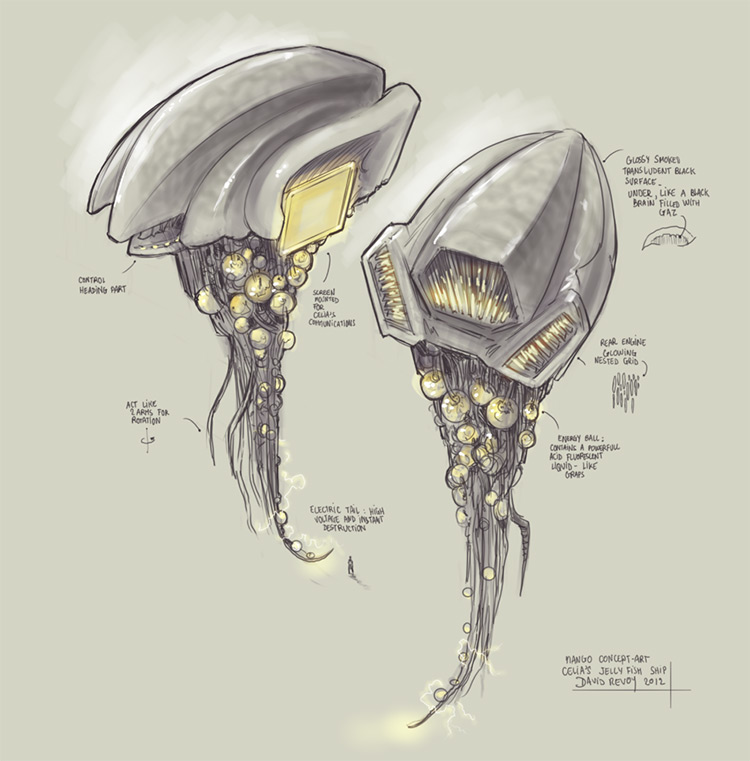
Until you’re at a level where your work is comparable to some of the work online, don’t worry much about a portfolio. Just understand that if you keep practicing you will reach a point where this makes sense, and you can’t be afraid to show your work to others along the way.
The Reddit concept art community is a great place to get unbiased opinions on your current work.
Helpful Guides & Resources
The best thing to do right now is just get started drawing. If you’re serious about learning then you’ll want to draw as much as possible.
A good estimate for getting started is 1-2 hours per day. A reasonable number to see real progress is 5-6 hours if you can swing it.
You might have to cut out activities like TV, video games, and parties. If you’re serious about becoming a concept artist then you really need to put in the effort to make it happen.
The following resources will get you started but you’ll need to make the effort to practice. Force yourself into a daily habit of drawing and keep increasing the time.
Start with 30 minutes, then 1hr, 2hrs, and increase your drawing time for as long as you can. You may be surprised how much can happen in one year of practice.
Now stop reading and get to work!
Learning Resources
YouTube Channels & Podcasts
- Chris Oatley ArtCast
- Rob Brown Concept Art Podcast
- FZD School YouTube Channel
- Sycra Art YouTube Channel
- Syn Studio Art YouTube Channel



